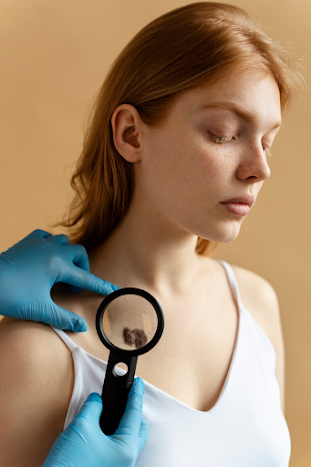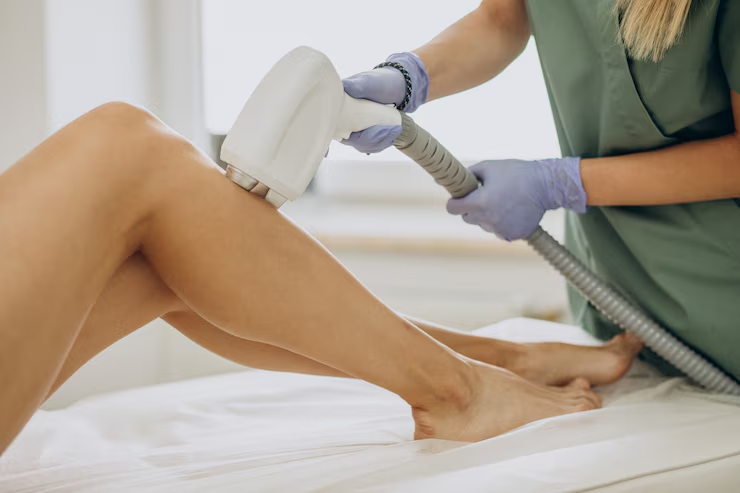What Are the Best Methods for Skin Tag Removal?
Skin tags, also known as acrochordons, are small, benign growths that appear on the skin, typically in areas where skin rubs against skin or clothing. These growths are often harmless but can be bothersome, especially when they become irritated or unsightly. For individuals seeking to remove skin tags, it’s important to understand the different methods available for safe and effective removal. In this article, we will explore the most popular and reliable methods for Skin Tag Removal in Dubai, ensuring that you are well-informed before making a decision.
Skin Tag Removal: Why Choose Professional Methods?
When it comes to skin tag removal, the methods you choose can vary depending on the size, location, and number of skin tags, as well as your personal preferences. Many people turn to dermatologists or professionals for their expertise and advanced techniques in removing skin tags. In fact, professional treatments are often recommended for larger or more stubborn skin tags that might not respond well to at-home treatments. Among the various options, medical professionals commonly use methods such as cryotherapy, excision, and electrocautery.
Cryotherapy for Skin Tag Removal
Cryotherapy is one of the most common methods used by dermatologists for skin tag removal. The procedure involves the application of extreme cold to the skin tag, freezing it off. The cold causes the cells of the skin tag to break down, and it typically falls off after a few days or weeks. Cryotherapy is effective for small to medium-sized skin tags, and it is a quick and relatively painless process. However, the treatment may cause some temporary discomfort, such as a stinging sensation or mild swelling at the treatment site. It’s also important to note that cryotherapy may require multiple sessions, depending on the size and nature of the skin tag.
Excision: A Surgical Approach
Excision is another method used to remove skin tags. In this procedure, a healthcare professional uses a sterile surgical tool to cut the skin tag off at its base. Excision is typically done under local anesthesia, ensuring that the patient does not experience any pain during the procedure. This method is particularly useful for larger or more stubborn skin tags, as it provides a definitive and immediate solution. While excision is a reliable option, it may leave a small scar at the removal site, especially if the skin tag was large. Proper aftercare is crucial to ensure the wound heals correctly and to avoid infection.
Electrocautery: Burning the Skin Tag Off
Electrocautery is a technique in which heat is used to burn the skin tag off. During this procedure, a specialized instrument delivers a high-frequency electric current to the skin tag, effectively removing it and cauterizing the area to minimize bleeding. Electrocautery is often used for larger skin tags and is considered a precise method for removal. This treatment is generally quick, and the healing process is usually straightforward. However, like excision, there may be some risk of scarring, particularly if the skin tag was large or deep. Electrocautery also requires local anesthesia to minimize discomfort during the procedure.
Ligation: Tying Off the Skin Tag
Ligation is a non-invasive method that involves cutting off the blood supply to the skin tag, causing it to wither and fall off naturally. This technique is often performed by tying a small string or thread around the base of the skin tag. Over time, the skin tag will lose its blood supply and eventually fall off. Ligation is typically used for smaller skin tags, and it can be done at home with caution or under the supervision of a healthcare provider. The process may take several days to a few weeks to work fully, and while it is relatively low-risk, it can cause some irritation if not done correctly.
Over-the-Counter Treatments for Skin Tag Removal
There are a variety of over-the-counter (OTC) treatments available for skin tag removal. These products typically contain chemicals that target the skin tag, causing it to dry out and eventually fall off. Some common OTC treatments include creams, lotions, and solutions that are applied directly to the skin tag. While OTC products can be convenient and cost-effective, they may not be as effective as professional treatments. Additionally, they can cause skin irritation, especially for individuals with sensitive skin. It's important to carefully follow the instructions on the packaging to avoid any potential side effects.
Home Remedies: Natural Skin Tag Removal Solutions
For individuals who prefer natural alternatives, there are several home remedies that people commonly use to remove skin tags. While these methods are not always scientifically proven to work, some individuals find success with them. Some popular home remedies for skin tag removal include:
Tea Tree Oil: Tea tree oil is a natural antiseptic that may help dry out skin tags. It can be applied directly to the skin tag several times a day. However, tea tree oil should always be diluted with a carrier oil to avoid skin irritation.
Apple Cider Vinegar: Apple cider vinegar is another natural remedy that may help remove skin tags. It is believed to work by breaking down the tissue of the skin tag. People typically apply it to the skin tag using a cotton ball and leave it on for several minutes before washing it off.
Banana Peel: Some individuals use banana peel as a natural remedy for skin tags, as it contains enzymes that may help break down the skin tag’s tissue over time. To use this remedy, a small piece of banana peel is placed over the skin tag, and it’s secured in place with a bandage overnight.
While these home remedies are generally safe to try, it’s important to approach them with caution. They may take longer to show results compared to professional methods, and there is always the risk of irritation or allergic reaction, especially for individuals with sensitive skin.
Laser Treatment for Skin Tag Removal
Laser treatment is a modern and highly effective method for removing skin tags. In this procedure, a laser is used to target the skin tag, causing it to burn off without affecting the surrounding skin. Laser treatment is precise and relatively quick, making it a popular choice for individuals looking for a non-invasive solution to skin tag removal. One of the key benefits of laser treatment is that it minimizes the risk of scarring, especially when compared to excision or electrocautery. Additionally, laser treatment can be used on a variety of skin types and for skin tags in hard-to-reach areas.
Prevention and Aftercare
After the removal of a skin tag, it is important to follow proper aftercare instructions to ensure the area heals properly and to minimize the risk of infection or scarring. Depending on the method used, aftercare instructions may vary. For example, if a skin tag is excised, it’s important to keep the wound clean and apply any recommended ointments to prevent infection. For cryotherapy or laser treatments, it’s important to avoid sun exposure and refrain from scratching or picking at the area.
To prevent future skin tags from forming, it is essential to maintain good skin hygiene and avoid friction in areas where skin tags are prone to develop. Wearing loose clothing and regularly moisturizing can help reduce irritation that may lead to the growth of new skin tags. If you are prone to developing skin tags, consult with a dermatologist to discuss preventive measures.
Conclusion
There are a variety of methods available for skin tag removal, ranging from professional treatments such as cryotherapy, excision, and electrocautery to natural remedies like tea tree oil and apple cider vinegar. Each method comes with its own set of advantages and considerations, and the best option for you will depend on the size, location, and number of skin tags, as well as your personal preferences. Whether you choose a professional treatment or a home remedy, it’s important to carefully follow aftercare instructions to ensure the best possible results. Always consult with a healthcare provider if you are unsure about the method that’s right for you or if you have concerns about your skin tags.




Comments
Post a Comment